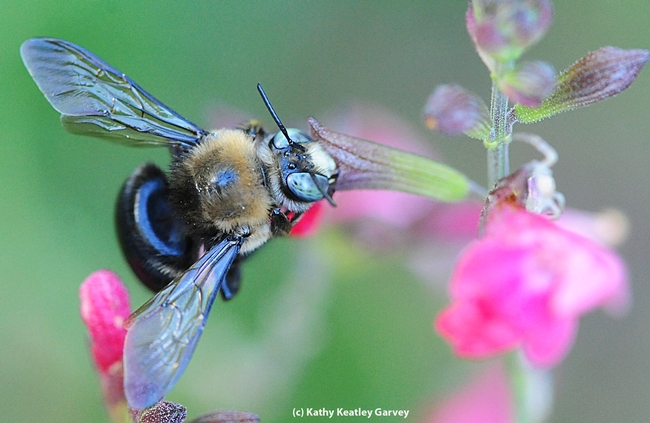Meet a carpenter bee.
This one (below) is a male carpenter bee, Xylocopa tabaniformis orpifex, as identified by native pollinator specialist Robbin Thorp, emeritus professor of entomology at the University of California, Davis.
It's also called a "mountain" or "foothill" carpenter bee.
When it slits the corolla of the flower--in this case, salvia--and bypasses the pollination process--this is called "nectar robbing."
The mountain/foothill carpenter bee is the smallest of the three species of carpenter bees in California, Thorp says. The other two are the Valley carpenter bee, Xylocopa varipuncta, the largest, and the California carpenter bee, Xylocopa californica, the second largest.
The male of the Valley carpenter bee is a green-eyed blond and often referred to as a "teddy bear." The female of that species is solid black. And huge!
The California carpenter bee or Xylocopa californica is known for its distinctive distinctive bluish metallic reflections on the body, Thorp says. The females have dark smokey brown wings.??
The one photographed below, Xylocopa tabaniformis orpifex, is common in the center of the Central Valley, "probably due primarily to increased nest sites such as redwood arbors and fences," Thorp says. Although considered a pollinator instead of a pest, "it can be a pest when it gets into untreated redwood used for water tanks or structural timbers," Thorp points out. "The females are black with light smokey-colored wings. The male has bright yellow marks on the lower part of its face and some yellow hairs on the top front of its thorax."
You can see the yellow hair on the thorax.
And how big is the smallest of the three carpenter bees? "Much larger than a honey bee, but about half the size of the other two carpenter bees," Thorp says.
Attached Images:

